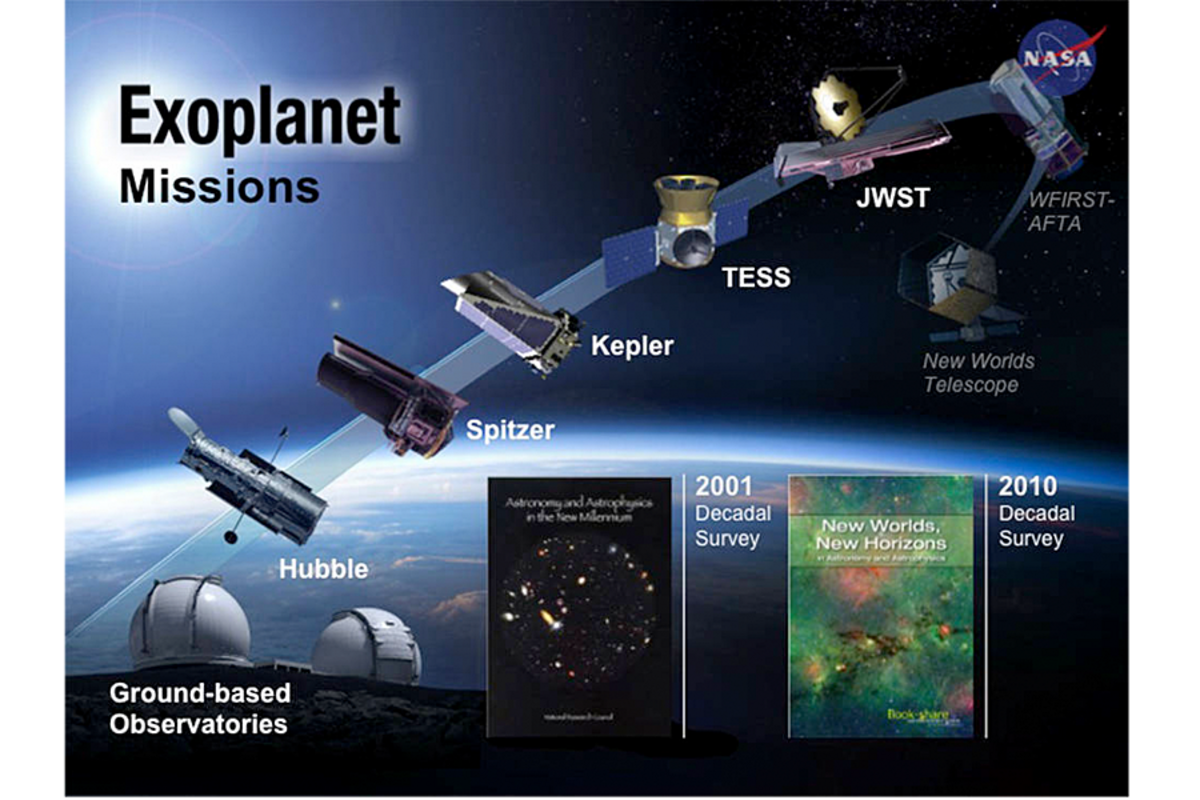Earth has a 'cousin,' says NASA. Will it soon have a twin?
Loading...
With Thursday’s announcement that NASA’s Kepler Space Telescope has discovered a host of new, Earth-like planets – including one in our galaxy, , described as an “older, bigger cousin to Earth” – the hunt for these extrasolar planets, or “exoplanets,” just took a giant leap forward.
For centuries, scientists weren’t sure if there were any planets at all outside our solar system. Speculation ended in 1992 when astronomers detected a pair of planets orbiting a pulsar. Three years later, scientists discovered the first exoplanet orbiting a star similar to our sun, and in the decades since, thousands of such planets have – ranging from giant, Jupiter-like gas planets to small, rocky Earth- and Mars-like planets.
Technological advances have helped accelerate the exoplanet hunt. And scientists now have a number of different techniques available to not only find such planets, but determine significant characteristics like their atmospheric composition and the presence of water – a compound that astronomers consider a key indicator of whether a planet could support life.
So how are these planets found? And how is the hunt likely to change in the coming years?
There are three primary techniques astronomers use to detect exoplanets. The first is the transit method: which involves watching a star and looking for a brief dimming of light as a planet passes between the star and the telescope. By studying this brief dimming of light, scientists can determine the size of the star and whether it orbits in the star system’s “Goldilocks zone” – the region where a planet could retain liquid water on its surface because it’s neither too hot nor too cold.
Astronomers can also determine the mass of exoplanets by measuring the “wobble” of its parent star – produced by the gravitational tug of the planet on its star. Finally, more advanced telescopes in the near future will be able image some exoplanets directly to determine the chemicals present in the planet’s atmosphere, the characteristics of its surface, and possibly even its weather patterns.
The Kepler Space Telescope has been operating for six years – essentially compiling a “galactic census” of exoplanets – but until recently scientists have been unable to examine the entire data set. Astronomers were able to document the presence of exoplanets in the habitable zones of stars through the transit technique, but they weren’t able to confirm if the planets satisfied all the criteria to be potentially Earth-like (such as mass and atmospheric composition).
Now, thanks to improved techniques and automated technology, astronomers are able to go back through old, unexamined Kepler data and identify which of the thousands of identified planets may be Earth-like.
“We’re no longer finding new [Earth-like] candidates due to collecting more data, we’re finding them because of improvements in techniques,” said Jeff Coughlin, a Kepler scientist at the SETI Institute, during a conference call with reporters.
As the Kepler mission went on, he added, “we were always able to document new [transiting] signals we found, but we weren’t able to go back and examine older signals.
To solve the data backlog, Dr. Coughlin said the Kepler team was able to write software that could automate the process of examining transit signals, meaning the software could go back through the Kepler data and determine, like a human scientist, if a planet has Earth-like characteristics.
The new announcement comes as NASA releases it’s seventh catalog of “candidate planets” found from the Kepler data set. The new catalog adds 521 new exoplanet candidates discovered by Kepler – including Kepler 452b – raising the total number of discovered candidates to 4,696. Of those 521, 12 have diameters between one to two times that of Earth, and nine of those orbit stars whose size and temperature are similar to our sun.
Candidates require follow-up observations and reassessment to verify they’re actual planets – the transit-like signal could be caused by a variety of other phenomena – but until the introduction of the automation software, time constraints meant that the Kepler team were usually unable to manually follow up on each candidate before the publication of the catalog.
The automation technology means that the seventh catalog is the first since 2011 to assess and reassess candidate planets.
“The resulting impact is that we are able to deliver a more uniform planet candidate catalog that utilizes the entire Kepler dataset, which will enable more accurate estimates of the number of small habitable zone planets in our galaxy,” said NASA in its for the announcement.
Coughlin, who led the analysis of the new candidate catalog, said during the conference call that the eighth catalog will likely be released a year from now.
“People are asking, is this the end? Is this all we’re going to get?” he said. “My answer is heck no. There’s a lot more to come.”
“We’re really optimistic we’re going to continue to discover more small habitable-zone planets,” he added. “I expect discoveries from this data will continue for several decades.”
NASA is already developing its next generation of space telescopes that will scan the stars for Earth 2.0. But while these telescopes will be more sophisticated, scientists say they won’t be looking deeper into space. Instead they will be looking closer to home.
In 2017, NASA will launch the Transiting Exoplanet Survey Satellite. The satellite will succeed Kepler – which is aging and survived a recent, scary breakdown in its stabilizing equipment – and continue scanning the sky for transiting signals.
The two-year TESS mission will monitor the hundreds of thousands of stars Kepler may have missed because the planets were orbiting stars so bright they were lost in the star’s glare. These include Earth-like planets that may be much closer to home than Kepler-452b, which is roughly 1,400 light-years away.
“No ground-based survey can achieve this feat,” says NASA on the .
The real breakthrough could come with the telescope scheduled to be launched in October 2018: the James Webb Space Telescope. Named after the former NASA administrator James Webb, the large infrared telescope will be able to analyze the atmospheres of exoplanets using a technique called spectroscopy.
According to the , the telescope will carry coronagraphs “to enable direct imaging of exoplanets near bright stars.”
“The image of an exoplanet would just be a spot, not a grand panorama, but by studying that spot, we can learn a great deal about it,” the website continues. “That includes its color, differences between winter and summer, vegetation, rotation [and] weather.”
Scientists are hoping the tag-team of the TESS and the JWST will, for the next few decades, identify and closely examine Earth-like planets that may be more easily explored by future generations.
“TESS will provide prime targets for further, more detailed characterization with the [JWST],” says NASA on the TESS website. “TESS's legacy will be a catalog of the nearest and brightest stars hosting transiting exoplanets, which will comprise the most favorable targets for detailed investigations in the coming decades.”
Coughlin said the next great discovery would be of a planet similar to Kepler-452b that’s closer to Earth.
“If we can find those planets, that gives humankind something to shoot for, and a generation from now may be able to reach that,” he added.
Today the Kepler team is savoring the discovery of Earth’s cousin. John Grunsfeld, associate administrator for NASA’s Science Mission Directorate, told reporters during the conference call that they’re optimistic they’ll find a much closer relation soon.
“It’s an unfolding story,” he said. “We’re getting closer and closer to finding a twin like the Earth.”





